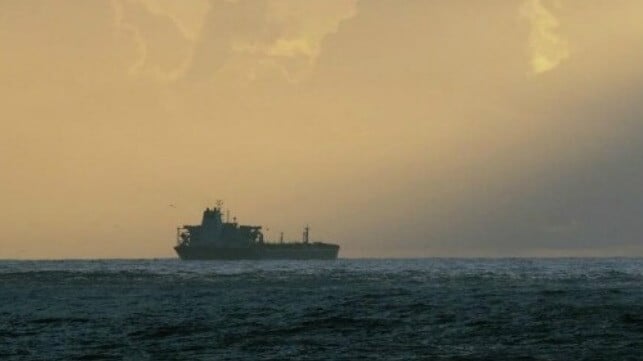Report: US Destroyer Blocks Sanctioned Shadow Tanker’s Route to Venezuela

It appears the Trump administration is further tightening its pressure on Venezuela, using one of the destroyers deployed to the Caribbean to spook a sanctioned shadow tanker from approaching Venezuela. Using tracking data, Bloomberg reports the sanctioned tanker Seahorse has attempted to approach Venezuela three times, and each time the U.S. destroyer USS Stockdale has “positioned itself in the path” of the tanker.
Bloomberg reports the situation began on November 13 when the Seahorse first approached Venezuela. It says the vessel made a U-turn, reversing course toward Cuba. The tanker, Bloomberg reports, has since tried two more times to approach Venezuela, but both times has turned back. The vessel’s AIS signal places it north of Aruba, along with several other tankers that are all reporting they are “awaiting orders.”
The Seahorse is typical of the sanctioned shadow fleet, with Bloomberg reporting it has been used for transporting a lighter fuel distillate, naphtha, from Russian refineries to Venezuela. In the past, United Against Nuclear Iran (UANI) has also reported that the vessel was being used in the Iran to Venezuela trade, with both Russia and Iran supporting Venezuela’s need for distillate products to maintain its oil operations.
The 70,246-dwt tanker, which was built in 2004, has had eight names, three of which were in the last two years. It claims a flag of Comoros, which Equasis reports as false, after jumping between Liberia, Panama, and Barbados. The EU sanctioned the vessel in May 2025, and the UK followed in July 2025. Its last listed inspection is October 2024 in the Russian Black Sea, where it was cited for a dozen deficiencies. This included fire safety, lifeboats, steam and pressure pipes, and other operational and safety issues.
Bloomberg writes that the effort to spook the tanker is likely part of a “maximum pressure” policy launched by the Trump administration against Venezuela. The U.S. has moved to block the oil trade and disrupt the flow of narcotics in the Caribbean, which claims are coming from Venezuela-based terrorist organizations. The U.S. has built up its fleet of warships in the region in a show of force, and Donald Trump is reported to be considering military strikes in Venezuela to stop the drug trade and topple the regime of Venezuelan President Nicolás Maduro.
The United States is also continuing its pressure campaign against Iran. It has launched further sanctions on tankers and companies enabling Iran’s energy trade, as well as the administration’s first sanctions on Russia related to the war in Ukraine.
The U.S. sanctions on both Russian companies Rosneft and Lukoil formally start on Friday, November 21. Analysts report they have already disrupted the flow of oil from Russia, especially to India, as well as to China. Bloomberg, using Kpler data, estimates that there are 50 tankers still heading toward China and India, while many others are holding at various points such as the Baltic. It speculates that nearly 48 million barrels of Russian crude could become stranded at sea.
